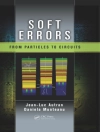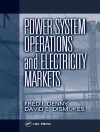In the years since the publication of the first edition of this book, the world has undergone drastic changes in terms of energy sources. This is reflected in the expansion of this second edition from 20 to 26 chapters. The most dramatic occurrence was the Tsunami which struck Japan in March of 2011 and set off a reactor catastrophe at the nuclear power plants in Fukushima. On the other hand fossil fuel technology drives the climate change to a threatening level. So, renewable energy sources are essential for the 21st century. The increasing number of wind power plants, solar collectors and photovoltaic installations demonstrates perceptibly that many innovations for tapping renewable energy sources have matured: very few other technologies have developed so dynamically in the past years.
Nearly all the chapters were written by professionals in the respective fields. That makes this book an especially valuable and reliable source of information. The second edition is extended by several new chapters such as tidal power stations, the Desertec project, thermography of buildings and more. Furthermore, the critical debate about current first generation bio-fuels is carefully reflected, and the book presents promising solutions that do not trade in food for fuel.
The editors are experienced journalists and illustrate the text with simple diagrams and information boxes, printed in full-color throughout.
A valuable resource for applied physicists, engineers in power technology, engineers, and anyone interested in natural sciences.
Table des matières
Preface –
Eicke Weber
Foreword –
Roland Wengenmayr, Thomas Buhrke
Renewable Energy Sources on the Rise –
Harald Kohl
A Tailwind for Sustainable Technology –
Martin Kuhn
Flowing Energy –
Roland Wengenmayr
How the Sun gets into the Power Plant –
Robert Pitz- Paal
Solar Cells – an Overview –
Roland Wengenmayr
Solar Cells from Ribbon Silicon –
Giso Hahn
Photovoltaic Cells on Glass –
Nikolaus Meyer
Cd Te-thin film solar cells –
Michael Harr
Energy from the Depths of the Earth –
Ernst Huenges
Does the Future belong to Biogas –
Roland Wengenmayr
Confusion about ‘bio’ fuels –
Kreysa
Fuel from seaweed –
Griehl
Synthetic Fuels from the Biomass –
Nicolaus Dahmen
Eletric Power from Hot Air –
Jorg Schlaich, Gerhard Weinrebe
Tidal current power stations –
Ruprecht
Energy Reserves from the Oceans –
Kai-Uwe Graw
Osmosis power station –
Peinemann
Is the Hydrogen Economy Around the Corner? –
Gerd Eisenbei?
DESERTEC- Trieb
Hydrogen, an alternative to fossil energy carriers? –
Stolten
Heat on Call –
Silke Kohler, Frank Kabus, Ernst Huenges
Taming the Flame –
Joachim Hoffmann
Electric vehicles –
Andrea Vezzini
Cooling with the Heat of the Sun –
Roland Wengenmayr
A Super Climate in the Greenhouse –
Roland Wengenmayr
An Exceptional Sustainabliliy Concept –
Christian Matt, Matthias Schuler
Building thermography –
Michael Vollmer
How Political Will Changes a Country –
Thomas Buhrke
A propos de l’auteur
Roland Wengenmayr is science journalist and editor of the journal ‘Physik in unserer Zeit’. He studied physics in Darmstadt, with a temporary stay at the European research laboratory CERN in Geneva. After the diploma he worked as an engineer in the chemical plant construction then he moved on to the publishing house Wiley-VCH, where he worked as commissioning editor for physics and physical chemistry. Today he writes for prominent newspapers on topics like e.g. renewable energy.
Thomas Buhrke is science journalist, editor of the journal ‘Physik in unserer Zeit’, and author of several popular science books within the ranges of physics and astrophysics. He studied Physics at the universities of Gottingen and Heidelberg and attained there a doctorate at the Max-Planck Institute for Astronomy. Subsequently, he changed to the publishing house Wiley VCH, where he started as an editor of the journal ‘Physikalischen Blatter’ (now: ‘Physik Journal’) and later changed to ‘Physik in unserer Zeit’.












